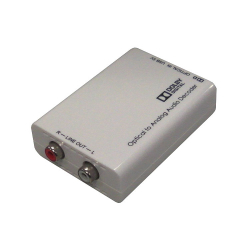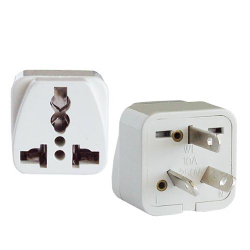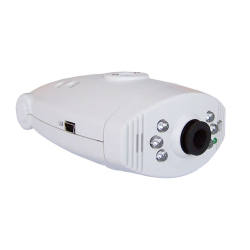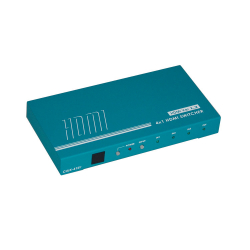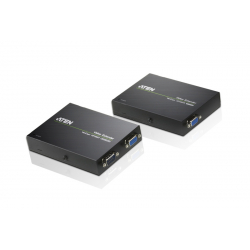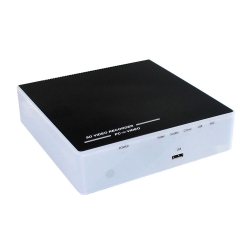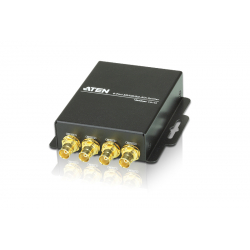A B C D E F G H I J K L M N O P Q R S T U V W X Y Z _
| Differential Phase | Differential phase is the error in the phase of the colour signal due to a change in luminance (brightness) level. It is measured by comparing two chrominance signals of initially equal phases riding on two different luminance levels. The inaccuracy is measured in degrees. The phase of the colour signal is responsible for displaying the proper hue, or base colour. Differential phase is important to video signals because if the phase of the subcarrier signal changes with a change in luminance level, then the picture being displayed will have colour selection problems. |
| Display Port | A digital display interface standard introduced by the Video Electronics Standards Association (VESA). It defines a new royalty-free, digital audio/video interconnect, intended to be used primarily between a computer and its display monitor, or a computer and a home-theater system. Display Port is a competitor to the HDMI connector, the current standard digital connection for high-definition consumer electronics devices. |
| Distribution Amplifier | A distribution amplifier is a device that accepts a single input signal and provides this same signal to multiple isolated outputs. A good quality distribution amplifier amplifies and pre-compensates the incoming signal to avoid signal degradation, before generating multiple identical buffered and amplified outputs. |
| DLP | Digital Light Processing® is a proprietary Texas Instruments technology that uses micro-mirrors on a chip to switch light for video projection, including digital televisions. DLP is used in DLP front projectors (small standalone projection units) and DLP rear projection displays. DLP is the current market-share leader in professional digital movie projection, largely because of its high contrast ratio and available resolution as compared to other digital front-projection technologies. DLP technology has also gained market share in the front projection market, with over 30 manufacturers using the DLP chipset to power their projectors. |
| Dolby (Surround) | Dolby Surround was the earliest consumer version of Dolby's multi channel analog film sound decoding format Dolby Stereo, introduced to the public in 1982. The system has four channels of audio information - left, centre, right, and mono surround – which are matrix-encoded onto two audio tracks. The stereo information is then carried on stereo sources such as videotapes, laserdiscs and television broadcasts from which the surround information can be decoded by a processor to recreate the original four-channel surround sound. |
| Dolby Digital | A family of multi-channel audio codecs/audio compression technologies from Dolby Laboratories, based on AC-3 technology. Dolby Digital includes several similar technologies, such as Dolby Digital EX, Dolby Digital Live, and Dolby Digital Plus. The most common of these is simply called 'Dolby Digital' which contains up to six discrete channels of sound. The most elaborate mode in common usage involves five channels for normal-range speakers (20 Hz – 20,000 Hz) (right front, centre, left front, right rear and left rear) and one channel (20 Hz – 120 Hz allotted audio) for the subwoofer driven low-frequency effects. |
| Dolby True HD | An advanced lossless multi-channel audio codec developed by Dolby Laboratories which is intended primarily for high-definition home-entertainment equipment such as Blu-ray Disc and HD DVD. Dolby TrueHD is a lossless audio format, meaning that no audio information is lost when the signal is compressed and uncompressed. It supports up to eight full-range channels of 24-bit/96 kHz audio. Dolby TrueHD competes with DTS-HD Master Audio, a similar lossless codec from Digital Theater Systems sound. It is the successor to the AC-3 Dolby Digital surround sound codec which was used as the audio standard for DVD discs. |
| DTS | DTS (Digital Theater Systems) is a company specialising in multichannel digital surround sound formats used for both commercial/theatrical and consumer grade applications. The term DTS usually refers to the multi-channel audio codecs from the company, including DTS, DTS-ES, DTS Neo:6, and DTS 96/24. DTS audio codecs are used in both commercial and home theatre applications. The basic and most common version of the format is a 5.1-channel system, which encodes the audio as five primary (full-range) channels plus a special LFE (low-frequency effect) channel for the subwoofer. However encoders and decoders can support numerous channel combinations. |
| DTS-HD Master Audio | The second of two DTS High Definition audio formats. It supports a virtually unlimited number of surround sound channels, can downmix to 5.1 and two-channel, and can deliver audio quality at bit rates up to lossless (24-bit, 192 kHz). DTS-HD Master Audio is selected as an optional surround sound format for Blu-ray and HD-DVD, where it has been limited to a maximum of 8 discrete channels. |

